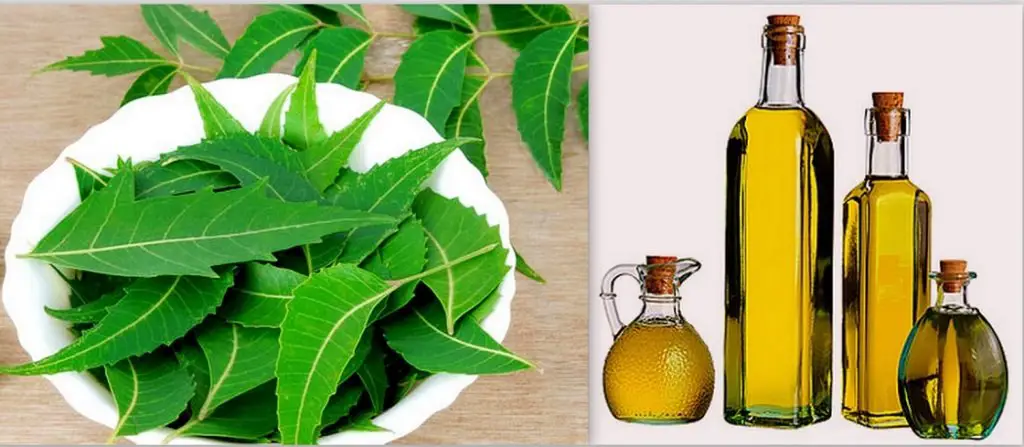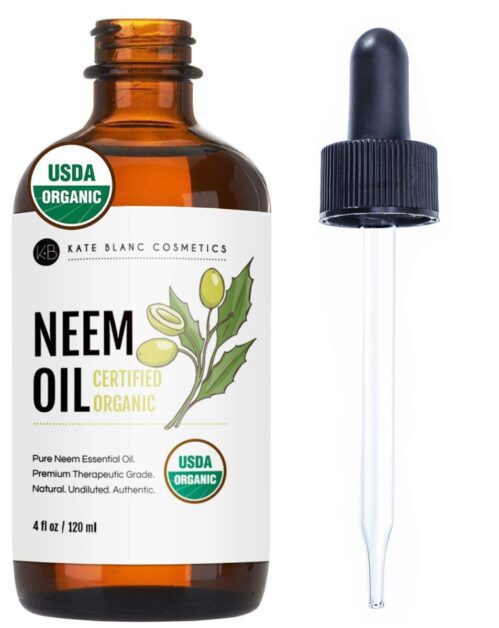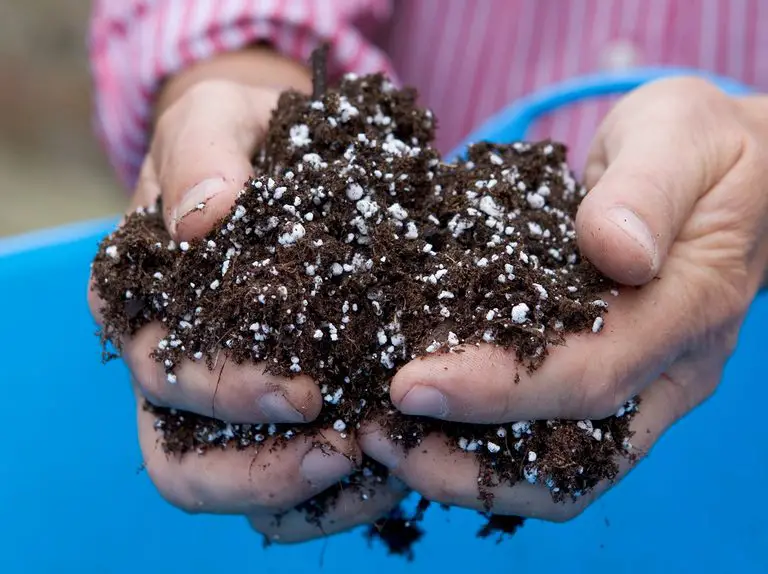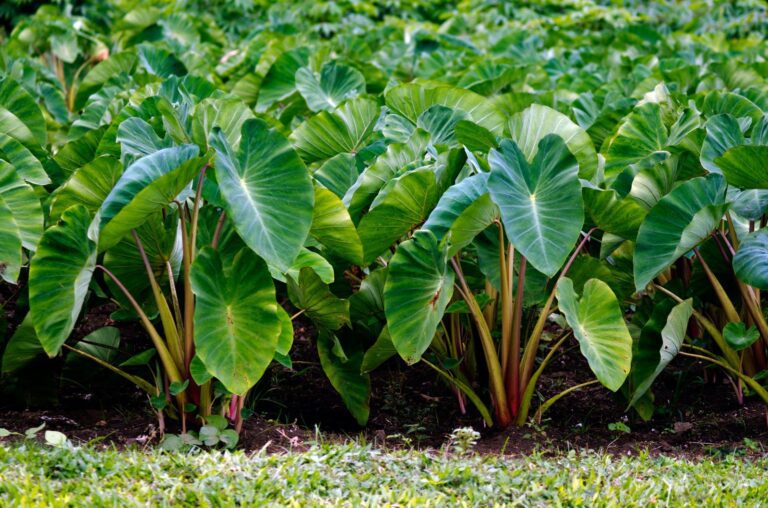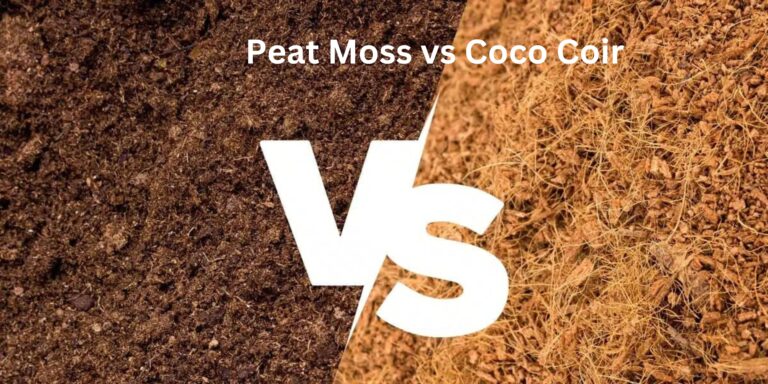Neem Oil: How to Use This Natural and Safe Pest Control
Looking to fend off pests in your garden without resorting to harsh chemicals? Look no further than neem oil – nature’s answer to pest control! Did you know that neem oil has been used for centuries in traditional medicine and agriculture due to its potent properties? In this guide, we’ll dive into the world of neem oil and uncover how you can harness its natural and safe benefits to protect your plants.
From repelling pesky insects to preventing fungal infections, neem oil is a versatile solution for any gardener. So, join us as we explore the wonders of neem oil and learn how to integrate it seamlessly into your gardening routine. Let’s get started on a greener, healthier garden today!
Table of Contents
The Science behind Neem Oil: How It Works as a Pest Control Agent
Neem oil, derived from the seeds of the neem tree, has been used for centuries as a natural pest control agent. Its effectiveness lies in its complex chemical composition, which includes compounds such as azadirachtin, nimbin, and salannin. These compounds work together to disrupt the growth and development of pests, ultimately leading to their demise.

- Feeding and Reproductive Disruption: Neem oil disrupts insects’ feeding habits, reducing appetite and altering behavior, while also interfering with their reproductive hormones.
- Dual-Action Effectiveness: Its ability to disrupt both feeding and reproduction makes neem oil a potent and natural alternative to chemical pesticides.
- Broad-Spectrum Insecticidal Properties: Neem oil targets a wide range of common garden pests, including aphids, mealybugs, and spider mites, without harming beneficial insects.
- Deterrent Action: Besides killing pests, neem oil acts as a deterrent, repelling insects from treated areas and preventing further infestations.
- Versatility: Due to its effectiveness against various pests, neem oil is a valuable tool for maintaining healthy and pest-free gardens naturally.
Identifying Common Pests: Which Insects Can Neem Oil Target?
Neem oil is an effective pest control agent that can target a variety of common insects.
| Common Garden Pests | Targeted by Neem Oil? | Treatment Methods | Effect on Insect |
|---|---|---|---|
| Aphids | Yes | Spray affected plants with diluted neem oil solution. Repeat every 7-10 days as needed. | Disrupts feeding and reproductive habits, leading to reduced population. Can also act as a repellent. |
| Mealybugs | Yes | Apply neem oil directly to affected areas using a cotton swab or spray bottle. Repeat treatment weekly. | Suffocates and disrupts feeding habits, causing death. |
| Spider Mites | Yes | Spray neem oil solution on affected plants, ensuring thorough coverage. Repeat every 5-7 days. | Interferes with feeding and reproduction, leading to population decline. |
| Whiteflies | Yes | Spray neem oil solution on the undersides of leaves where whiteflies gather. Repeat application every 5-7 days. | Suffocates and disrupts feeding, reducing population. |
| Thrips | Yes | Spray affected plants with neem oil solution, paying attention to leaf undersides. Repeat every 5-7 days. | Disrupts feeding and reproduction, causing decline in population. |
| Caterpillars | Partially | Apply neem oil directly to caterpillars or affected areas of plants. Repeat as needed. | May deter feeding and cause limited mortality. |
| Beetles (including Japanese beetles) | Partially | Spray neem oil on affected plants, focusing on beetles and larvae. Repeat application as necessary. | May deter feeding and reproduction, but effectiveness varies. |
| Scale Insects | Partially | Apply neem oil solution directly to affected areas, ensuring thorough coverage. Repeat treatment weekly. | Suffocates and disrupts feeding habits, leading to population decline. |
| Leafhoppers | Partially | Spray neem oil solution on affected plants, focusing on undersides of leaves. Repeat every 7-10 days. | Interferes with feeding and reproduction, reducing population. |
| Ants | Limited | Apply neem oil solution to ant trails and entry points. Repeat as needed. | May deter ants temporarily, but not highly effective as a long-term solution. |
| Fleas | Limited | Mix neem oil with water and spray on pet bedding and areas where fleas are present. Repeat regularly. | May repel fleas, but not effective for severe infestations. |
| Ticks | Limited | Apply neem oil to pet’s fur, focusing on tick-prone areas. Repeat as needed. | May repel ticks, but not highly effective for eliminating infestations. |
| Mosquitoes | Limited | Use neem oil-based mosquito repellent on skin or diffuse neem oil indoors. Reapply repellent as needed. | Acts as a repellent, but not highly effective for mosquito control. |
| Earwigs | Limited | Apply neem oil to areas where earwigs congregate, such as damp and dark areas. Repeat as needed. | May deter earwigs temporarily, but not highly effective for long-term control. |
| Snails and Slugs | Limited | Spray neem oil directly on snails and slugs or on areas where they are present. Repeat application as needed. | May deter snails and slugs, but effectiveness varies. |
Identifying and understanding the common pests that neem oil can target is crucial for effective pest control. By recognizing the insects in your garden or indoor space, you can employ neem oil as part of an integrated pest management strategy to protect your plants and maintain a healthy garden.
Preparation: Gathering the Necessary Tools and Equipment
To effectively use neem oil as a pest control agent, it is important to gather the necessary tools and equipment before application. Having the right supplies on hand will ensure a smooth and efficient process, allowing you to tackle any pest infestation with ease.
- Spray Bottle: Choose a clean and sturdy spray bottle with a fine mist nozzle for even distribution of the neem oil solution.
- Measuring Cup or Syringe: Ensure accurate measurement of neem oil and dilution agents during the mixing process.
- Mixing Container or Bucket: Use a clean container large enough to accommodate the required volumes of neem oil and dilution agent.
- Stirrer or Whisk: Have a tool for thorough mixing of neem oil and dilution agent to ensure uniformity.
By having these essential tools on hand, you’ll be well-equipped to prepare and apply neem oil effectively for pest control in your garden.
Review for Kate Blanc Cosmetics Natural Neem Oil and VIVOSUN 0.2-Gallon Handheld Garden Pump Sprayer
In my quest to combat garden pests naturally, I turned to Kate Blanc Cosmetics Natural Neem Oil and the VIVOSUN 0.2-Gallon Handheld Garden Pump Sprayer, and the results exceeded my expectations.
Kate Blanc’s Neem Oil proved to be a powerful ally in my battle against pests. Mixing it with water and a few drops of dish soap, I created a potent homemade pest spray that effectively controlled aphids, spider mites, and other common garden nuisances. The oil’s high quality and natural properties gave me confidence in its effectiveness and safety for my plants, pets, and family.
However, applying the neem oil spray wouldn’t have been as seamless without the VIVOSUN Handheld Garden Pump Sprayer. Its compact design and adjustable nozzle allowed for precise application, whether I needed a fine mist or a targeted spray. The pump mechanism was easy to operate, and the sprayer’s durability ensured it could handle the demands of regular use in my garden.
While the neem oil’s strong scent may not appeal to everyone, it dissipates quickly after application. Additionally, the sprayer’s 0.2-gallon capacity may require frequent refills for larger gardens, and maintaining spray pressure necessitates regular pumping.
Overall, the combination of Kate Blanc’s Neem Oil and the VIVOSUN Pump Sprayer proved to be a winning duo in my efforts to maintain a healthy and pest-free garden. With their effectiveness, ease of use, and natural ingredients, they’ve become indispensable tools in my gardening arsenal. Whether you’re a seasoned gardener or just starting out, I highly recommend giving them a try for a thriving garden naturally.
✅ Versatile Use: Ideal for pest control, skincare, and haircare.
✅ Organic: Certified organic, free from harmful chemicals.
✅ Effective Pest Control: Works well against a wide range of garden pests.
✅ Moisturizing: Great for use in homemade skin and hair products.
✅ Eco-Friendly: Safe for the environment and non-toxic to beneficial insects.
❌ Viscosity: Thick and can be difficult to mix with water.
❌ Staining: Can stain clothes and surfaces if not handled carefully.
❌ Application Frequency: Needs regular reapplication for continued effectiveness.
❌ Price: Slightly more expensive than some other neem oil brands.
❌ Packaging: Some users reported issues with the bottle leaking.
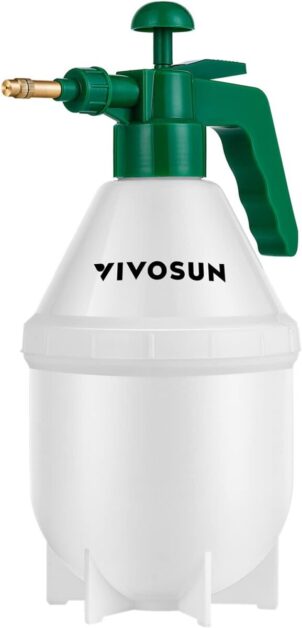
✅ Adjustable Nozzle: Provides fine mist to direct spray options.
✅ Durable Build: Made from high-quality, long-lasting materials.
✅ Ergonomic Design: Comfortable grip for extended use.
✅ Easy to Use: Simple pump mechanism for consistent pressure.
✅ Multipurpose: Suitable for indoor and outdoor gardening tasks.
❌ Pressure Maintenance: Needs regular pumping to maintain spray pressure.
❌ Plastic Parts: Some components may feel less sturdy.
❌ Manual Effort: Requires physical effort to pump and spray.
❌ Leakage Issues: Some users reported minor leaks.
❌ Nozzle Clogging: Can occasionally clog with thicker solutions.
Dilution Guidelines: How to Properly Mix Neem Oil for Pest Control
To properly mix neem oil for pest control, it is important to follow the appropriate dilution guidelines. Neem oil is a concentrated substance, and using it undiluted can be harmful to plants and beneficial insects. The dilution ratio will vary depending on the type of pest you are targeting and the severity of the infestation.

By following the dilution guidelines and taking necessary safety precautions, you can ensure the effective use of neem oil for pest control in your garden or indoor plants.
Application Techniques: Different Ways to Apply Neem Oil for Maximum Effectiveness
One of the key factors in maximizing the effectiveness of neem oil as a pest control agent is the method of application. Different application techniques can yield varying results, so it’s important to understand the options available and choose the one that suits your needs best.
- Foliar Spraying: Dilute neem oil according to instructions and use a spray bottle or sprayer to evenly coat plant leaves. Direct contact suffocates pests and inhibits reproduction. Ensure thorough coverage, especially on the underside of leaves where pests hide.
- Soil Drenching: Mix neem oil with water and pour it around the base of plants. Absorbed by roots, neem oil targets soil-dwelling pests and provides systemic protection against future infestations. Effective for controlling root aphids, fungus gnats, and nematodes.
By selecting the appropriate application technique, such as foliar spraying or soil drenching, tailored to your pest problem, you can maximize the effectiveness of neem oil as a natural pest control agent. Each method offers distinct advantages in achieving a pest-free environment.
Experimenting with different techniques and observing the results can help you find the most effective way to harness the power of neem oil for pest control.
| Application Technique | Description | Target Pests | Advantages |
| Foliar Spraying | Dilute neem oil according to instructions and use a spray bottle or sprayer to coat the leaves of affected plants. | Pests on leaves, such as aphids, mites, and caterpillars | Direct contact with pests, suffocating them. Thorough coverage, reaching the underside of leaves where pests hide. |
| Soil Drenching | Mix neem oil with water and pour it onto the soil around the plant’s base. Absorbed by roots, providing systemic protection. | Pests in the soil, like root aphids, fungus gnats, nematodes | Targets pests residing in the soil and provides long-term systemic protection. Effective against soil-dwelling pests. |
| Seed Coating | Mix neem oil with seeds before planting. The oil helps protect emerging seedlings from pests and diseases. | Soil-borne pests, seedling diseases | Protects seeds and emerging seedlings from soil-borne pests and diseases. Can enhance germination and early plant growth. |
| Neem Cake Application | Use neem cake, a byproduct of neem oil extraction, as a soil amendment. It acts as a natural fertilizer and pest repellent. | Soil-dwelling pests, enhances soil fertility | Provides long-term soil improvement, releasing compounds that deter pests and enhance plant nutrition. |
| Compost Tea with Neem | Brew compost tea with neem oil for foliar application. Combines the benefits of compost and neem oil for overall plant health. | General pests, promotes overall plant health | Enhances plant immunity, encourages beneficial microorganisms, and serves as a foliar feed. Suitable for organic gardening. |
| Trunk Injection | Inject neem oil directly into the trunk or stem of the plant using specialized equipment. Effective for systemic pest control. | Systemic pests, tree borers | Targets pests that affect the plant systemically. Provides targeted treatment for specific tree and large shrub issues. |
Neem Oil for Indoor Pest Control: Tips and Tricks for a Pest-Free Home
Indoor pest control can be a challenging task, but with the right tips and tricks, you can achieve a pest-free home using neem oil. Neem oil, derived from the seeds of the neem tree, is a natural and effective solution for combating pests. Its ability to disrupt the life cycle of insects and interfere with their feeding and reproduction makes it an ideal choice for indoor pest control.
- Focus on Hiding and Breeding Areas: Apply neem oil to cracks, crevices, and entry points like windows and doors where pests hide or breed indoors.
- Precision with Spray Bottle: Use a spray bottle for easy and precise application in target areas, ensuring thorough coverage.
- Treat Common Problem Areas: Address areas prone to infestations such as baseboards, kitchen cabinets, and room corners to prevent pest spread.
- Low Toxicity, High Caution: Neem oil is low in toxicity to humans and pets, but caution is still necessary. Wear protective clothing like gloves and goggles during handling to ensure safety.
It is also advisable to ventilate the area during and after application to minimize any potential odors. By following these tips and tricks, you can harness the power of neem oil to create a pest-free environment within your home.
Neem Oil for Outdoor Pest Control: Protecting Your Garden and Plants
Outdoor gardens are often susceptible to a wide range of pests that can wreak havoc on our beloved plants. From aphids and mealybugs to caterpillars and mites, these unwanted invaders can quickly destroy the beauty and health of our gardens. Fortunately, neem oil serves as a powerful tool in our fight against these pests.
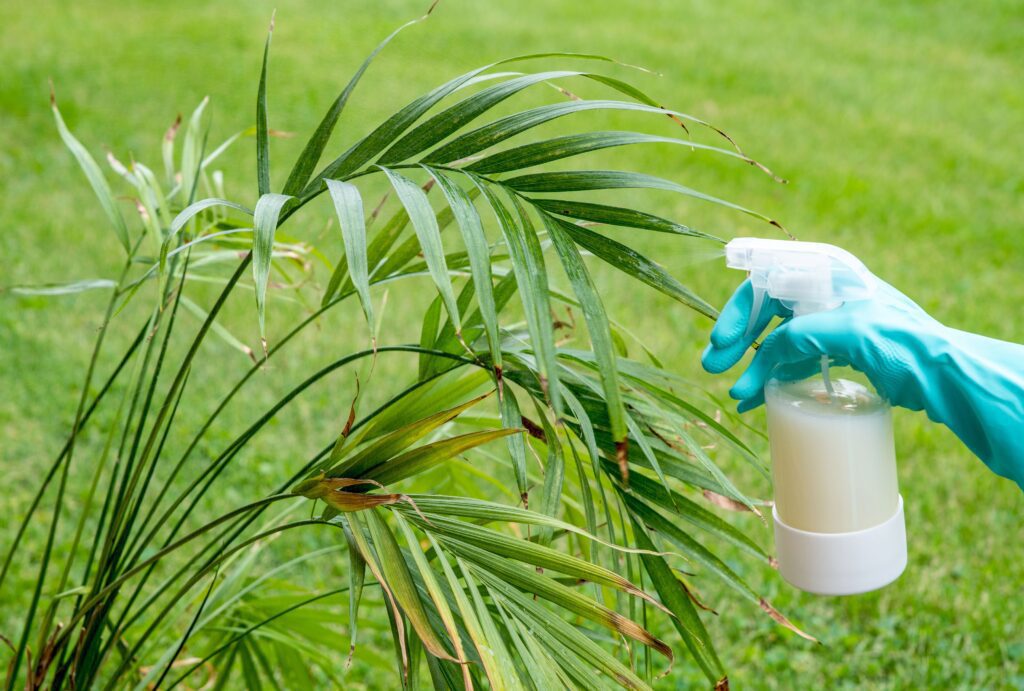
Timing and Frequency: When and How Often to Apply Neem Oil
Neem oil is a valuable tool in the fight against pests, but applying it at the appropriate timing and frequency is crucial to maximize its effectiveness.
- Specific Pest Problems: Timing of neem oil application depends on the pest issue and the life cycle of targeted insects. For example, for aphids, applying neem oil at the first sign of their presence can prevent rapid reproduction and spread.
- Frequency Guidelines: Generally, neem oil is applied every 7 to 14 days for ongoing protection.
- Adaptation to Severity: In cases of severe infestations or persistent pest problems, more frequent applications may be necessary.
- Close Monitoring: Monitor plants closely and observe changes in pest activity to determine if additional treatments are required. Adjust timing and frequency accordingly to maintain effective pest control.
Remember to always follow the manufacturer’s instructions for dilution and application rates to ensure safe and effective use of neem oil on your plants.
Safety Measures: Precautions to Take When Handling Neem Oil
Neem oil, with its natural insecticidal properties, is a popular choice among gardeners for pest control. While it is effective in combating pests, it is important to take certain precautions when handling neem oil to ensure safety.
Safety Precautions for Using Neem Oil
Protective Clothing
- Wear appropriate protective clothing when applying neem oil to minimize direct contact with the skin:
- Gloves: Prevent skin contact and protect hands from irritation.
- Long sleeves and pants: Cover skin to prevent splashes and sprays from reaching the skin.
- Safety goggles or face shield: Protect eyes from potential splashes or sprays.
Preparation and Application
- Dilute neem oil properly to avoid harm to plants and beneficial insects:
- Follow manufacturer’s guidelines: Ensure the right concentration is achieved.
- Mix oil and water thoroughly: Create a homogenous solution before application.
- Read and adhere to product label instructions: Prioritize safety and follow specific precautions.
Effective Use of Neem Oil
Timing and Application
- Apply neem oil in the early morning or late evening: Beneficial insects are less active at these times, reducing the risk of harm.
- Repeat applications as necessary: Continue applications until the pest infestation is under control.
Monitoring and Patience
- Monitor plant health: Observe the effectiveness of neem oil in controlling pests and diseases.
- Be patient: Neem oil works gradually, so persistent application is necessary for optimal results.
Additional Tips
Soil Drench
- Use neem oil as a soil drench: Pour the diluted solution directly on the soil to control pests and diseases.
Dormant Spray
- Apply neem oil during dormancy: Kill overwintering pests and eggs on dormant plants.
Compatibility with Beneficial Insects
- Neem oil is generally safe for beneficial insects: Avoid direct spraying and apply during times when beneficial insects are less active.
Handling and Storage
- Rinse the sprayer immediately after use: Prevent contamination and ensure a fresh batch for the next application.
- Store neem oil products properly: Follow manufacturer’s storage instructions to maintain effectiveness and safety.
By following these safety measures, you can ensure the effective and safe use of neem oil in your pest control efforts. However, it is always advisable to read and adhere to the specific instructions and precautions mentioned on the product label. Remember, safety should always be a priority when handling any pesticide.
Neem Oil for Different Plant Types: Adjusting Application Methods Accordingly
Different plants require different care and attention, and this holds true when it comes to using neem oil as a pest control agent. Adjusting application methods accordingly is crucial to ensure maximum effectiveness and minimize any potential damage to your plants. Let’s take a closer look at how neem oil can be used on different plant types.
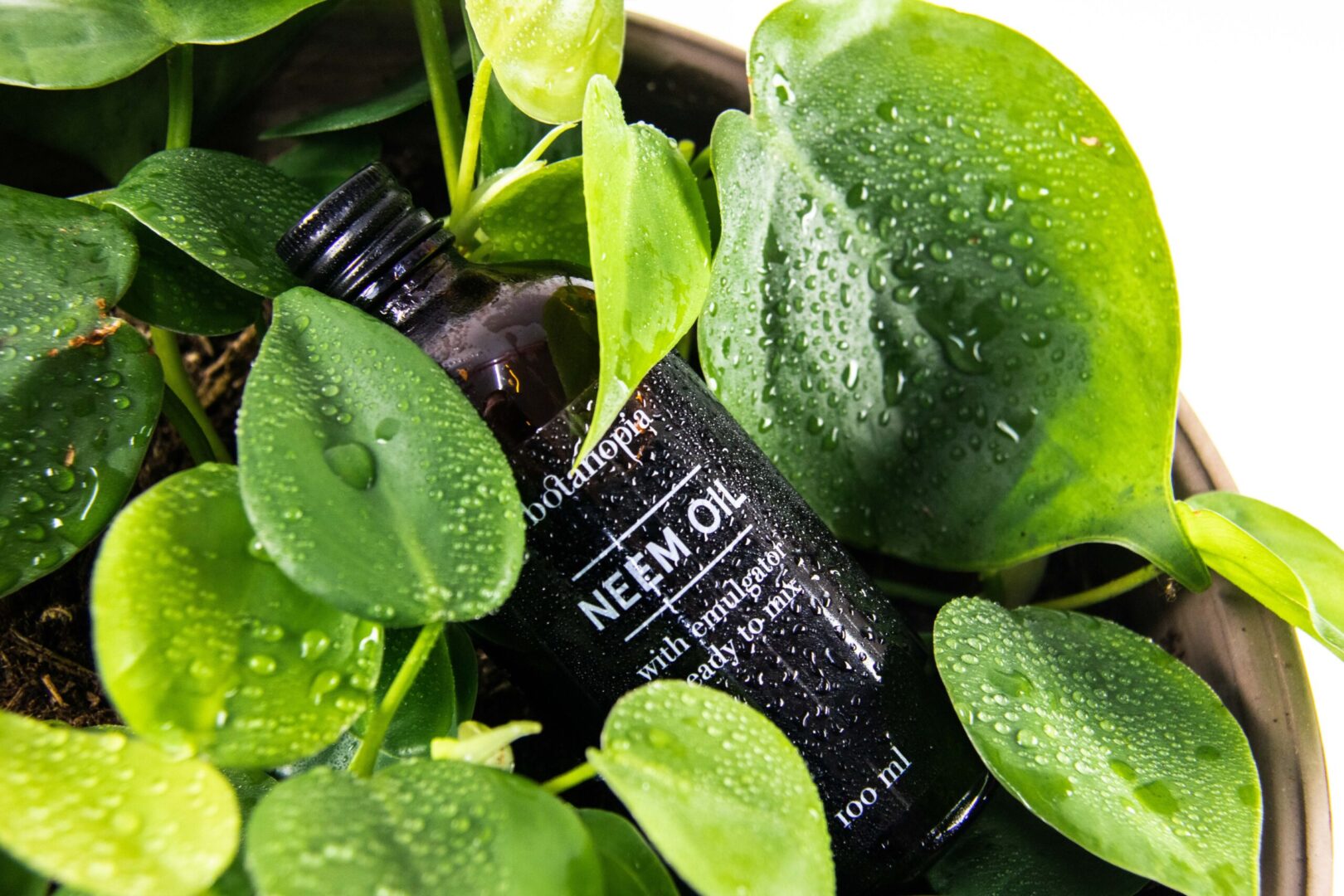
Delicate and Sensitive Plants (e.g., Ferns, Orchids)
- Dilution Ratio: Use a diluted solution of one tablespoon of neem oil per gallon of water to avoid causing harm to delicate plants.
- Misting Technique: Apply the diluted solution with a gentle misting technique to ensure even coverage of foliage without damaging the plants.
- Effective Pest Reach: The misting technique allows neem oil to effectively reach pests hiding on the undersides of leaves, providing comprehensive pest control.
Tougher Plants and Shrubs (e.g., Roses, Citrus Trees)
- Stronger Concentration: For tougher plants, a slightly stronger concentration of neem oil can be used. A ratio of two tablespoons of neem oil per gallon of water can provide better control against persistent pests like aphids or mites.
- Generous Application: Apply the solution generously to foliage and stems using a handheld sprayer, ensuring thorough coverage.
- Attention to Infestation Signs: Pay close attention to any signs of infestation and target those areas specifically. Coat both upper and lower leaf surfaces to address hiding spots favored by pests.
Combining Neem Oil with Other Pest Control Methods: Enhancing Effectiveness
Neem oil is a powerful, natural pest control agent with a range of benefits. However, it can be even more effective when combined with other pest control methods. By integrating neem oil with alternative approaches, you can create a comprehensive pest management strategy that maximizes effectiveness and minimizes pest infestations in your garden or home.

By integrating neem oil into your pest control routine and supporting natural predators, you can effectively suppress and deter pest populations while promoting a healthy and balanced ecosystem in your garden.In the next section, we will dive deeper into the different ways neem oil can be used for specific pests, allowing you to target and treat various insect infestations effectively.
Neem Oil for Specific Pests: Targeting and Treating Different Insect Infestations
Neem oil stands out as a versatile and effective remedy for combating various insect infestations in your garden. Its natural composition ensures safe usage, while its potent compounds act as a formidable deterrent and control method against common pests like aphids, whiteflies, spider mites, and thrips.
Understanding Pest Lifecycle for Targeted Treatment
To effectively combat specific pests, it’s vital to comprehend their lifecycle and habits. By identifying the culprit behind the infestation, you can tailor your neem oil application for optimal results.
- Aphids: These prolific reproducers and tissue-damaging insects can be thwarted by applying diluted neem oil directly onto affected areas. This disrupts their metabolic processes, effectively curbing their population growth.
- Whiteflies: Target these pests by spraying neem oil on the undersides of leaves where they lay their eggs, thus halting their development cycle.
Integrated Pest Management Approach
- Holistic Strategy: Utilize neem oil as part of an integrated pest management approach, complemented by proper sanitation and preventive measures.
- Regular Monitoring: Stay vigilant by routinely inspecting your plants for signs of infestation. Swift action is key to nip any burgeoning pest problems in the bud.
With neem oil as a crucial component of your pest management arsenal, you can foster a thriving garden ecosystem while safeguarding your plants from invasive pests in an eco-friendly and sustainable manner.
Stay tuned for our upcoming section on preventive measures, where we’ll delve into how neem oil can be used to avoid future pest problems in your garden.
Preventive Measures: Using Neem Oil to Avoid Future Pest Problems
Overview
- Neem oil is effective not only in treating existing pest infestations but also as a preventive measure to avoid future pest problems.
- By incorporating neem oil into your regular plant care routine, you can create an unfavorable environment for pests, discouraging their presence and preventing future infestations.
Key Compounds
- Azadirachtin, a natural compound found in neem oil, acts as a potent repellent to a wide range of pests.
- When plants are treated with neem oil, these compounds form a protective barrier on the plant’s surface, deterring pests from feeding, laying eggs, or establishing colonies.
Benefits
- This prevention method is especially beneficial for those susceptible to common garden pests like aphids, whiteflies, and spider mites.
- Neem oil creates an unfavorable environment for pests, making it difficult for them to establish colonies and reproduce.
Application Schedule
- To effectively use neem oil as a preventive measure, it is important to establish a regular application schedule.
- Apply neem oil every 7-14 days, depending on the severity of pest activity and the plant’s sensitivity.
- Be sure to thoroughly coat all plant surfaces, paying extra attention to leaf undersides and new growth, as pests often target these areas.
Tips for Effective Use
- Conduct a test on a limited area before applying neem oil to your entire garden to ensure the plants respond well to the spray.
- Monitor the treated area for any adverse effects after 24 hours.
- Avoid spraying your plants in extreme temperatures, both cold and hot, and refrain from using neem oil spray in direct sunlight.
- Do not treat stressed plants until they are in better condition to avoid causing additional damage.
- Wash all produce from your garden before consumption, even though neem oil-based products are recognized as safe by the EPA.
By following these preventive measures, you can significantly reduce the risk of future pest problems and maintain a healthy garden environment.
| Preventive Measures | Description | Target Pests | Application Frequency | Key Considerations |
| Regular Foliar Application | Dilute neem oil according to instructions and spray it on plant surfaces every 7-14 days. | Common pests like aphids, whiteflies, spider mites | Every 7-14 days, depending on pest activity and plant sensitivity | Thoroughly coat all plant surfaces, focusing on undersides and new growth. |
| Soil Drenching for Systemic Defense | Mix neem oil with water and apply it as a soil drench to provide systemic protection against soil-dwelling pests. | Soil-dwelling pests, nematodes | Periodic applications, especially during growing seasons | Ensure even distribution around the plant base, promoting systemic uptake. |
| Seed Treatment for Preventive Action | Coat seeds with neem oil before planting to deter soil-borne pests and protect emerging seedlings. | Soil-borne pests, seedling diseases | Prior to planting seeds | Incorporate neem oil into seed treatment for enhanced germination and protection. |
| Neem Cake as a Soil Amendment | Use neem cake as a soil amendment to naturally release neem compounds, creating an inhospitable environment for pests. | Soil-dwelling pests, enhances soil fertility | Seasonal incorporation into soil | Acts as a long-term soil conditioner, promoting overall soil health. |
| Compost Tea with Neem for Overall Care | Brew compost tea with added neem oil to provide a foliar feed, enhance plant health, and discourage pests. | General pests, promotes overall plant health | Regular intervals, such as monthly | Boosts plant immunity and encourages beneficial microorganisms. |
| Trunk Injection for Systemic Protection | Inject neem oil directly into the trunk or stem to provide systemic defense against pests affecting the plant internally. | Systemic pests, tree borers | As needed for specific tree and large shrub issues | Effective for targeting pests that impact the plant systemically. |
Neem Oil Alternatives: Exploring Other Natural Pest Control Solutions
Natural pest control solutions are gaining popularity among gardeners and homeowners who prefer a chemical-free approach. While neem oil is a widely used option, there are other alternatives worth exploring. These alternatives provide effective pest control while minimizing harm to beneficial insects and the environment. Let’s delve into some of these natural solutions and their potential benefits.
1. Essential Oils: Many essential oils possess insecticidal properties that can be harnessed for pest control. For instance, peppermint oil is known to repel ants, mosquitoes, and spiders, while rosemary oil can deter aphids and cabbage loopers. Tea tree oil, on the other hand, has been found to be effective against bed bugs and dust mites.
To use essential oils, dilute a few drops in water and spray directly on affected plants or areas where pests are present. Remember to conduct a patch test first to ensure the oil does not cause any adverse reactions on your plants.
2. Horticultural Oils: Horticultural oils, derived from plant-based sources, offer another natural solution for pest control. These oils work by smothering and suffocating pests, disrupting their breathing apparatus. They are particularly effective against soft-bodied insects such as aphids, mites, and scale insects. Applying horticultural oil to plants can help control infestations and minimize damage. However, it is important to note that horticultural oils can also harm beneficial insects.
To avoid this, apply the oil during the dormant season or when beneficial insects are less active. Additionally, always follow the manufacturer’s instructions for proper dilution and application.
Watch more about in the following video:
FAQ
How does neem oil work as a pest control agent?
Neem oil works as a pest control agent by disrupting the insect’s hormonal balance, inhibiting their feeding and reproduction, and ultimately causing their death.
Which insects can neem oil target?
Neem oil can target a wide range of common pests including aphids, whiteflies, mealybugs, scale insects, spider mites, and caterpillars.
What tools and equipment are necessary for applying neem oil?
To apply neem oil, you will need a sprayer or spray bottle, protective clothing, gloves, goggles, and a measuring cup or spoon for proper dilution.
How should neem oil be diluted for pest control?
Neem oil should generally be diluted with water according to the manufacturer’s instructions, typically in a ratio of 1 to 2.5 teaspoons of neem oil per quart of water.
What are the different ways to apply neem oil for maximum effectiveness?
Neem oil can be applied as a spray, drench, or soil soak to target pests on leaves, stems, and the soil. It can also be applied directly to affected areas or used as a systemic treatment.
Are there any tips for using neem oil as an indoor pest control solution?
When using neem oil indoors, make sure to ventilate the area well, avoid spraying near food or food preparation areas, and protect sensitive plants or surfaces from potential damage.
How can neem oil be used for outdoor pest control in gardens and plants?
Neem oil can be sprayed directly on plants, flowers, and trees in the garden to control pests. It acts as a repellent and organic insecticide to protect against a wide range of pests.
When and how often should neem oil be applied for maximum effectiveness?
Neem oil should be applied during the early morning or late evening when temperatures are cooler, and it should be reapplied every 7-14 days or as needed depending on the severity of the infestation.
What safety precautions should be taken when handling neem oil?
When handling neem oil, it is important to wear protective clothing, gloves, and goggles to avoid skin and eye irritation. It is also recommended to keep children and pets away from treated areas until the spray has dried.
Can neem oil be used on all types of plants?
Neem oil can be used on most types of plants, including vegetables, fruits, herbs, ornamentals, and houseplants. However, it is always recommended to do a patch test on a small area before applying it to the entire plant.
Can neem oil be combined with other pest control methods for enhanced effectiveness?
Yes, neem oil can be combined with other pest control methods such as biological controls, trap crops, and cultural practices to create an integrated pest management approach for better results.
Can neem oil target and treat specific insect infestations?
Yes, neem oil can target and treat specific insect infestations such as aphids, which can be controlled by spraying neem oil directly on the affected plants and repeating the application as necessary.
Can neem oil be used as a preventive measure to avoid future pest problems?
Yes, neem oil can be used as a preventive measure by regularly applying it to plants and garden areas susceptible to pest infestations. It acts as a deterrent and helps maintain a pest-free environment.
Are there any alternative natural pest control solutions to neem oil?
Yes, there are alternative natural pest control solutions to neem oil, such as insecticidal soap, diatomaceous earth, pyrethrin-based sprays, essential oils, and companion planting. These alternatives can be used depending on the specific pest and plant requirements.

Studied Agricultural Engineering-Plant Protection at University of California, Davis.
Head of Content writing team at Southelmontehydroponics.com

